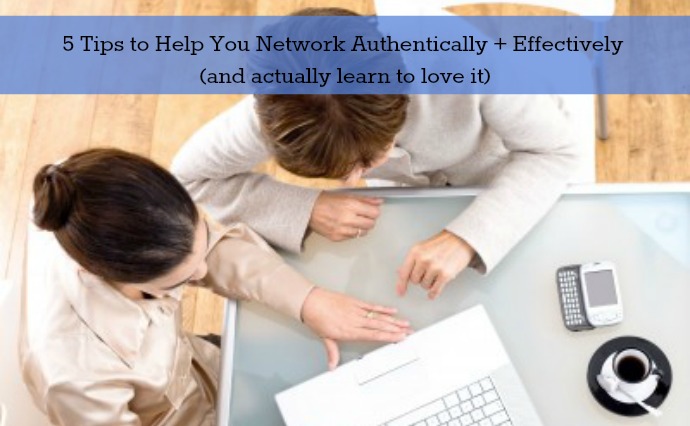It’s February, which means about 80% of your New Year’s goals are already shot, right? Why is dreaming up our big ideas so much easier than making them happen? Today’s insightful guest post from entrepreneur and content marketing expert Betsy Talbot will change all that.
When you embark on a big project for your business, even one as essential (and fun!) as branding, it’s easy to get lost in the details and spin out of control. Either your list of actions or decisions grows so big you can’t possibly finish it (so you don’t even start), or you make a serious dent in the list but run out of steam before you finish.
It is frustrating to be gung-ho about something important and watch it wither away to apathy or outright frustration before it is finished.
My husband Warren and I are pros at getting things done. It has always been true, but it is even more so since we first had the idea to travel the world in 2008. We eventually made our journey into a lifestyle media business called Married with Luggage that we kept for many years (we retired it to pursue other entrepreneurial ventures), and we created books and videos to show other people how to create the life they really want from the life they already have. We challenged ourselves personally and creatively to do new things, publicly and privately, and we mostly succeed.
I’m not writing this to brag. I’m writing because people notice these things, and we get this question a lot via email and in person:
Why do we accomplish so many of our personal and business goals while other people struggle to even get started on theirs?
While we’d like to think it is because we are superhuman (only because we could then justify wearing shiny costumes and capes), the answer is much more practical.
In fact, it consists of just 5 basic steps which I’m going to share with you today. Tip #1 is…
1. Goals have deadlines
In our book, Dream Save Do: An Action Plan for Dreamers, my husband Warren and I wrote that a dream without a deadline is already dead. This is true if your goal is as big as a trip around the world or as small as making one sales call per day.
After you’ve determined a goal, whether it is to move, start a side business, paint your house, save money, get a new job, or lose weight, the first step is giving yourself a finish date. Without it, you won’t push yourself to get it done, no matter how much you want it. The status quo and routine of life is too comforting, too hard to break out of, without a specific reason to do so.
When we start a writing project, the first step is to give ourselves a publish date. From the very first word of the project, we know when it is due and how many words have to be written each day to make it happen. When we decide to travel to a new destination, we pick a date to go/arrive. We may leave a lot of details open after we decide to do something, but we never shrink back from a deadline.
The action of setting a date propels you to begin the work to make your goal a reality. (Tweet this!)
2. Take action on dreams every single day
You can’t really be part-time about your goals and dreams or you’ll never reach them. Many people think life is changed by big steps, huge events, and giant milestones, but the truth is that big, lasting change happens in the tiny steps and choices you make every single day. The cumulative effect of those small steps is what brings about the milestones and big leaps everyone around you thinks happened overnight.
Before we left on this journey in 2010, we sold a few possessions every single week for 2 years. Creating Craigslist ads isn’t glamorous, but it took this daily attention to decluttering to free us up to leave (and pad our bank account at the same time).
Now we use the same strategy to carve out time to write books, set up an editorial calendar, manage our websites, edit photographs, practice languages, exercise, market our books, and contribute to other websites. We also make time to connect with our friends and family around the world every week. Most people think we’re on permanent vacation, but it is because we do these essential things that we continue to live a life of travel and experience.
You don’t get something for nothing.
The small actions you take on your goals every single day are a better predictor of overall success than your perfectly drafted plans or good intentions. (Tweet this!)
3. Don’t be afraid to try something new or make a mistake
When you want to accomplish more things, it means you’ll be doing more. It may sound simple to spell it out like that, but people forget. And when the things you want to get done are new to you, you are bound to make mistakes.
Warren and I screw up regularly, but we typically don’t screw up twice on the same thing. The key in all this new activity is to learn from what works as well as what doesn’t so you continually improve as you go. When you eventually become good at one thing, it opens up space in your life to become a beginner at something else.
When we were in Peru we signed up for our first multi-day trek. We had zero experience other than walking, and we came very ill-equipped to handle the rigors of the journey. We were wet and tired every single day – we didn’t even bring rain gear during the rainy season! – but we learned a lot. Since then, we’ve become pros at trekking and do it all over the world.
The key is to never stop making mistakes because it means you’ve stopped trying new things. (Tweet this!)
4. Know how to take negative feedback
Opinions are like asses: everyone’s got one. And sometimes the person giving you his opinion is an asshole. But getting things done requires a certain amount of rubber to your skin. You will always have critics, even when you do amazing things (Campbell’s Soup says thousands will lose jobs after Betsy Talbot selfishly cures common cold! Details at 11.). Sometimes the feedback is justified and you can learn from it, making you or your project better, and other times you’re going to just have to let it bounce off.
The key is divorcing your personal feelings of worth from feedback on your endeavors, both good and bad. Failure or mistakes on a project do not equate to failures or mistakes as a human being. This is also when you discover that some people will love what you are doing for the exact same reasons others hate it. You will never please everyone, and knowing this from the start will help you keep moving – and learning – when negative feedback starts.
When you can step to the side and view feedback in a more objective way, it allows you to glean the lessons and discard the trash quickly and productively. (Tweet this!)
5. Track actions and results
Whether you geek out like we do with a spreadsheet or you journal your progress creatively with video or art, staying on track with a goal requires tracking. If your project is longer than a day, you will forget what you’ve done, the brainstorms you had for what to do next, or the ideas others contribute along the way. Tracking also keeps you from veering off into unnecessary tasks as your attention wanders.
Weight Watchers has built their entire business around tracking food and calorie intake daily and weighing weekly. Athletes keep track of their personal best performance times so they can improve. Project managers track everything from software development to building houses.
We keep track of the metrics on our website, Facebook page, and book sales, learning what works and what doesn’t. We track our pitches to other websites, radio, and magazines. We monitor our daily writing counts when working on a book. We make a list of all the things we want to see/eat/do when we arrive in a new location so we won’t forget.
It can be as simple as a small notebook or as elaborate as a software program.
You’ll reach your goals faster if you know what to do, when to do it, and what happens as a result of doing it. (Tweet this!)
How you can get more things done
Whether you have one big dream in mind or just want to accomplish more of the small stuff on a regular basis, these 5 habits will create the perfect environment to make it happen. We work these habits every day, and they have given us a life we once only dreamed of. (In fact, that’s why we never had it before: we were only dreaming!)
- Set a firm deadline
- Take daily action on your goals
- Don’t be afraid of mistakes and trying new things
- Learn from negative feedback (and ignore it when there is nothing to learn)
- Track your actions and results
Betsy and Warren Talbot show people every day how to make their biggest dreams a reality with practical, step-by-step advice that works. Check out their book, Dream Save Do: An Action Plan for Dreamers, to find out how you can make your wildest dreams a reality. (EDITORIAL NOTE: It’s fantastic!)
Which one tip will you put into practice today to make your dreams a reality? Tweet me @redslice and let me know!





